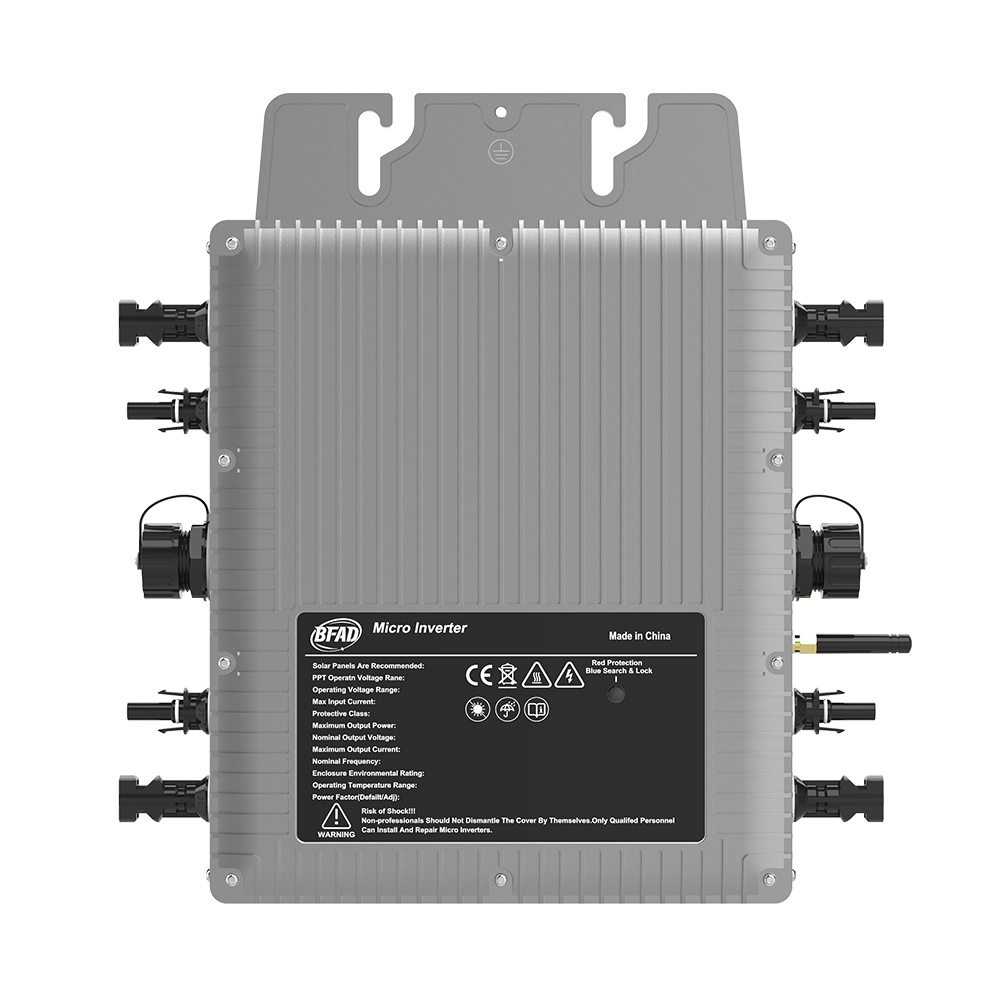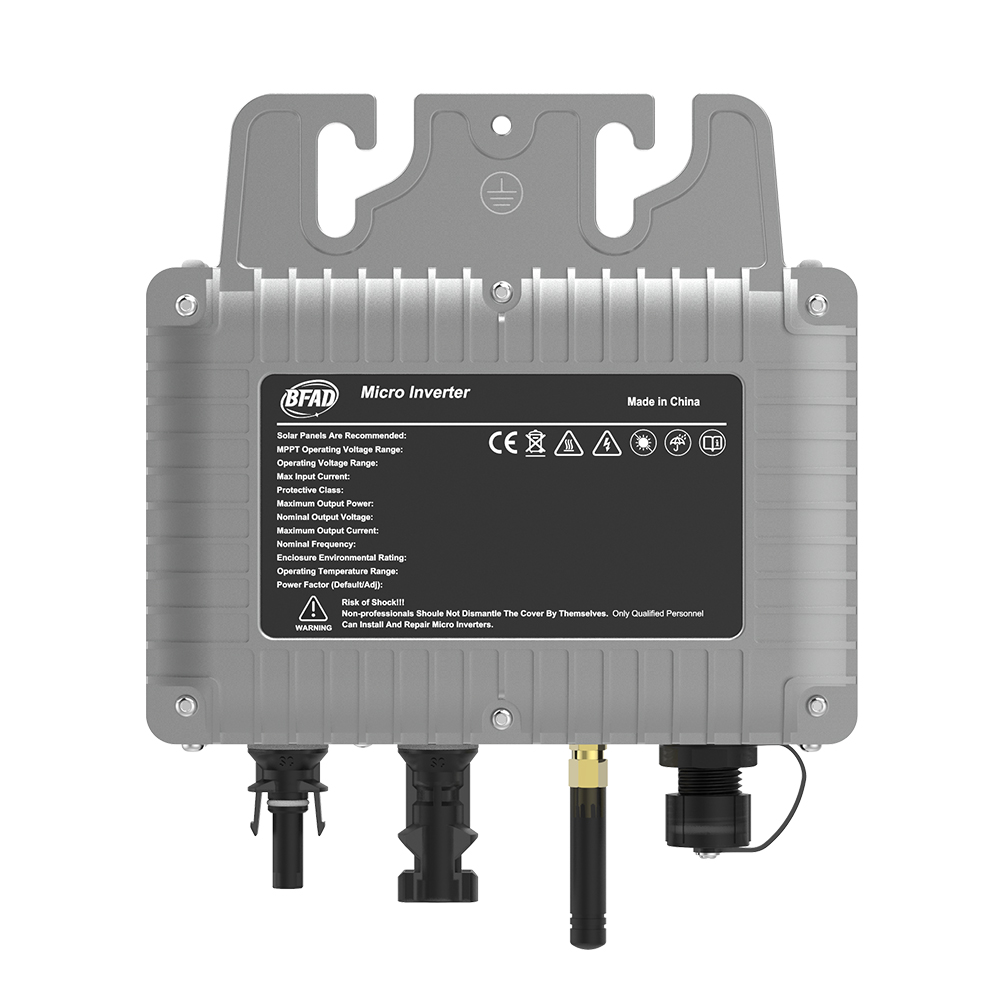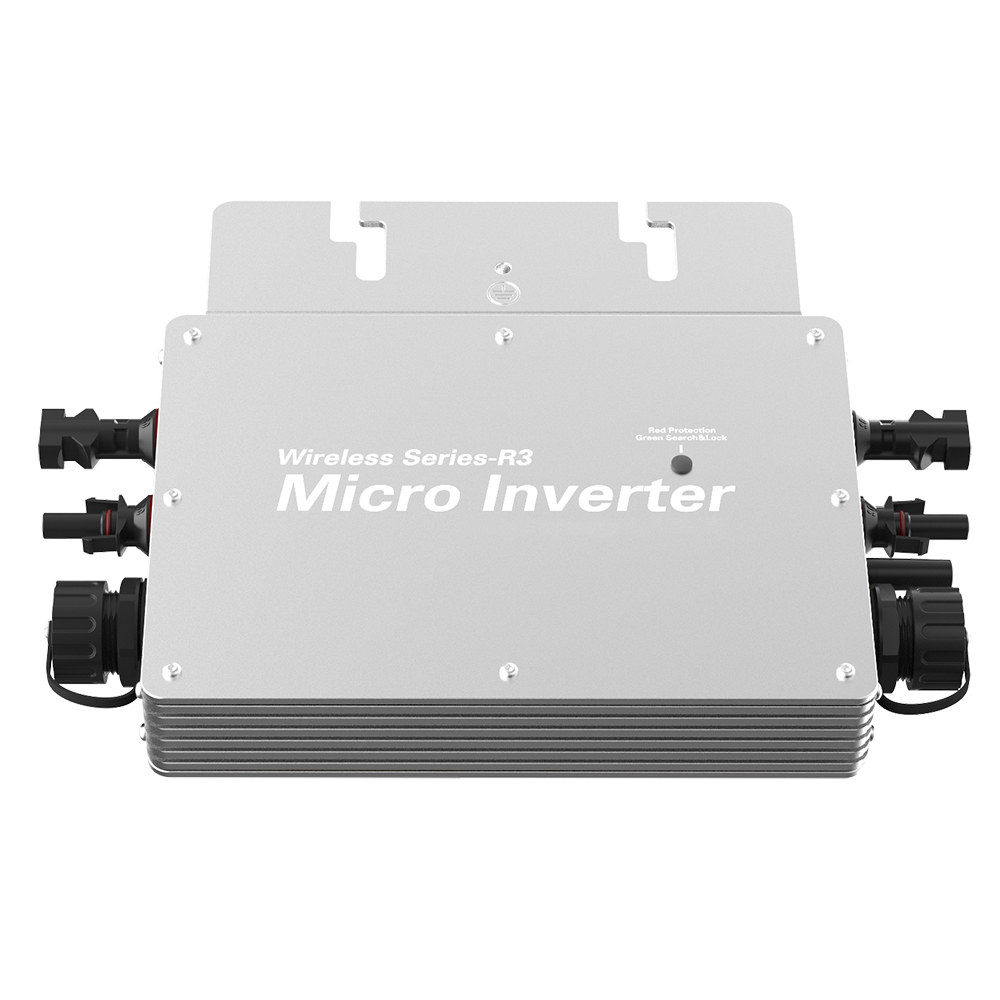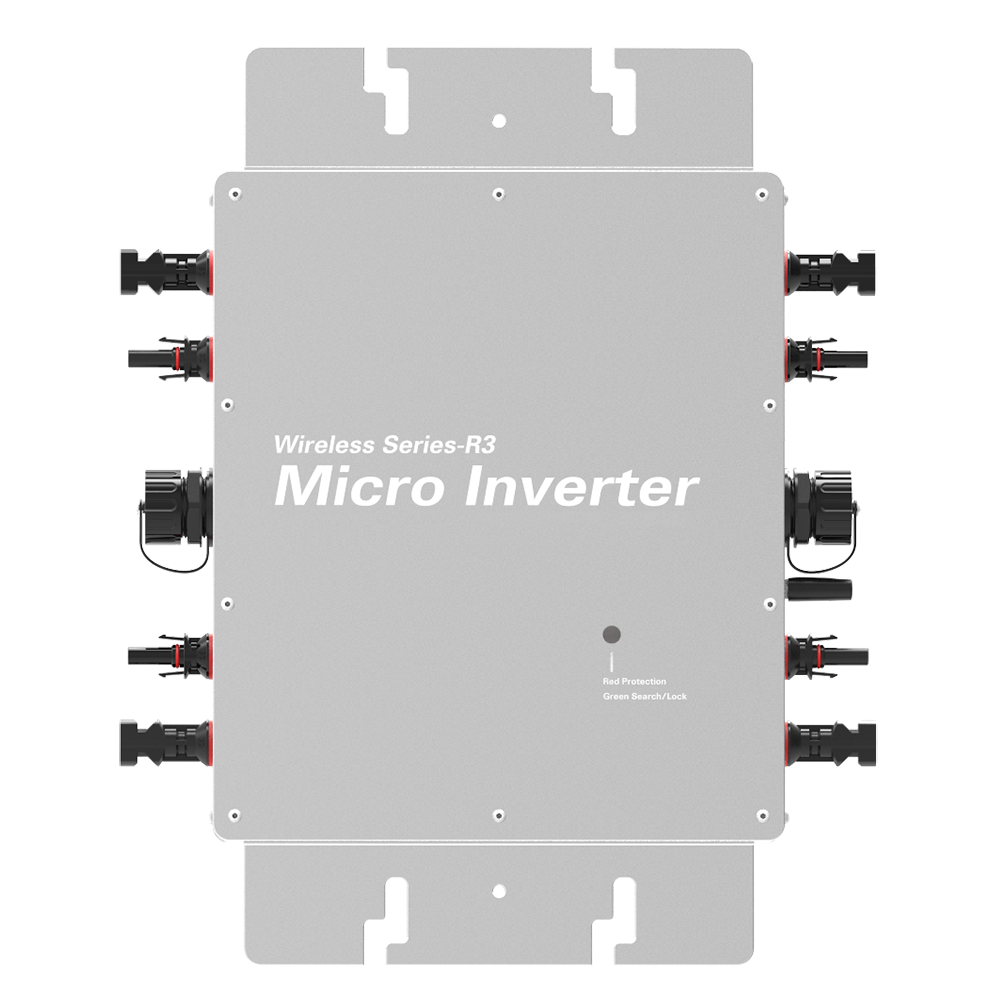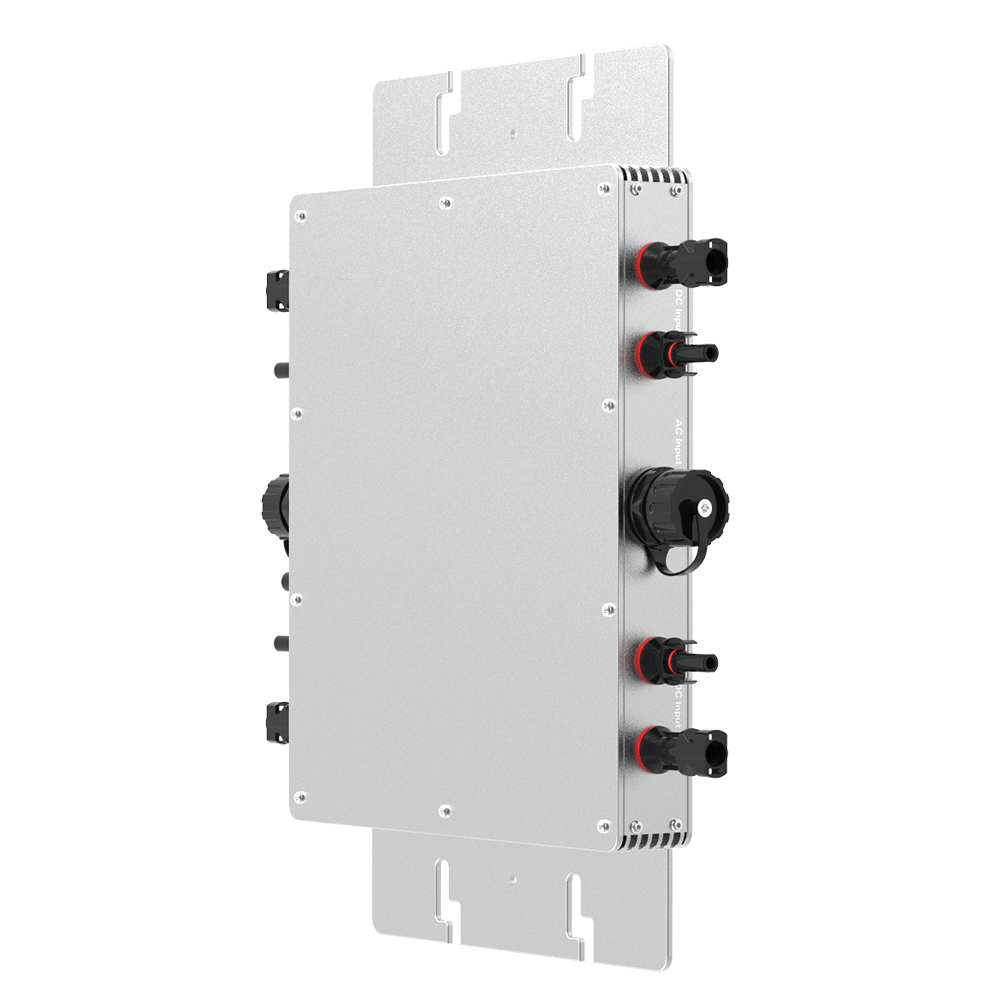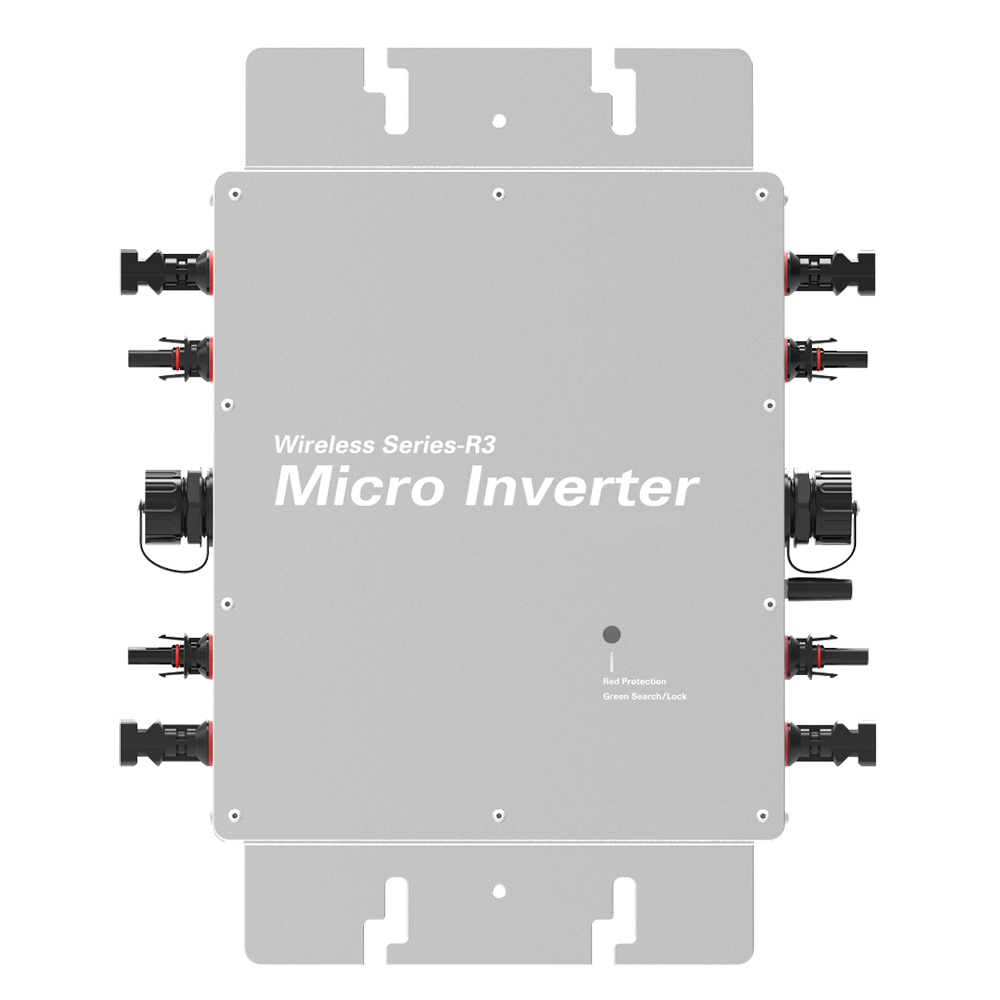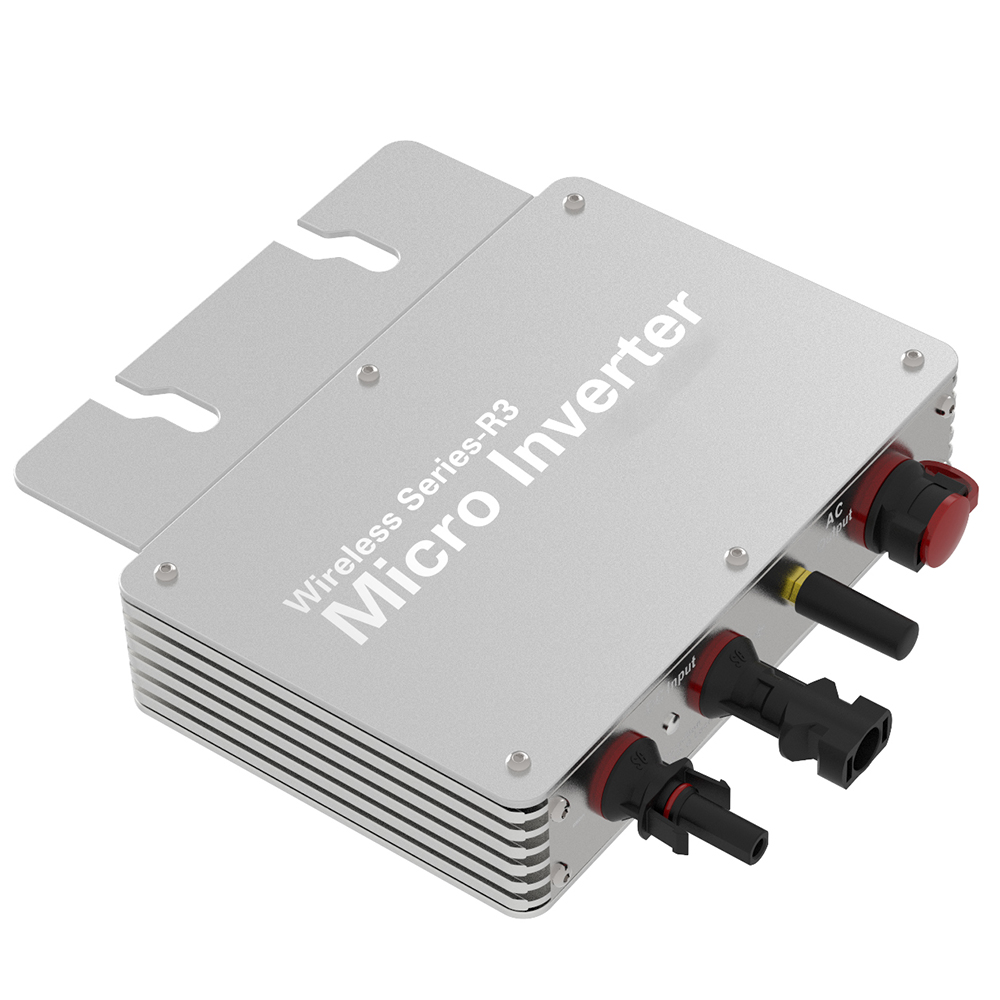
Kaideng Energy's fifth-generation SMI series communication products adopt a waterproof streamlined design, which can better provide heat dissipation for the equipment. The built-in maximum power point tracking engine (MPPT) can better capture the changes in light, even in rainy weather, and it can capture and collect sunlight to the greatest extent. The inverter is compatible with a variety of conventional solar panels with an open circuit voltage of 22~60V, and through technical means, the panel can exert its best performance.
| Model | SMI-2800 | |
| DC Input | ||
| Recommended solar panels | 4×875W | |
| MPPT operating voltage range | 30-54V | |
| Starting voltage | >22V d.c. | |
| Operating voltage range | 22-60V d.c. | |
| Max input current | 4×27A | |
| Max input short circuit current | 4×32A | |
| Array max feedback current | 0A | |
| AC Output | ||
| Max output power | 2800W | |
| Rated output current | @120V 23.5A; @230V 12.2A | |
| Standard output voltage range | 120/230V a.c. Adaptive output | |
| Standard frequency range | 50/60Hz | |
| Power factor (def/adj) | > 0.99 default 0.95 leading...0.95 lagging | |
| Harmonic Distortion Of Output Current | <5% | |
| Maximum number of connections per branch | @120V 2PCS; @230V 4PCS | |
| Technical Features | ||
| Peak Microinverter Efficiency | 92.70% | |
| CEC weighted efficiency | 92.50% | |
| Nominal MPPT Efficiency | 99.80% | |
| Night power consumption (mW) | 0 | |
| Ambient temperature range | -20℃~+50℃ | |
| Storage temperature range | -20℃~+50℃ | |
| Dimensions (L .xWxH) | 305×320×48.5mm | |
| Weight | 3.16kg | |
| Waterproof level | Outdoor Nema 3R(IP65) | |
| Cooling method | Natural cooling (no fan) | |
| Degree of pollution | PD3 | |
| Power Delivery Mode | Reverse transmission, load priority | |
| Communication method | Wi-Fi | |
| Rated transmit power | 802.11b: +17dBm ± 1.5dBm (@11Mbps) 802.11g: +15dBm ± 1.5dBm (@54Mbps) 802.11n: +14dBm ± 1.5dBm (@HT20, MCS7) | |
| Surveillance system | Smart Life | |
| Electrical Standard | EN 55011:2016+A2:2021;BS EN 55011:2016+A2:2021 CISPR 11:2015/AMD2:2019; EN IEC 61000-3-2:2019+A1:2021; EN IEC 62311:2020 BS EN IEC 61000-3-2:2019+A1:2021; EN 301 489-1 V2.2.3 (2019-11);IEEE 1547A:2014 EN 301 489-17 V3.2.4 (2020-09); EN 300 328 V2.2.2 (2019-07); DIN VDE V 0126-1-1 (VDE V 0126-1-1):2013-08; VDE-AR-N 4105 (VDE-AR-N 4105):2011-08; DIN VDE V 0124-100 (VDE V 0124-100):2012-07; IEC 62109-1:2010; IEC 62109-2:2011 DIN VDE 0126-1-1 (VDE V 0126-1-1):2013-08 VFR 2019 UL 1741:2010 Ed.2+R:16Sep2020 CSA C22.2#107.1:2016 Ed.4 ABNT NBR 16149:2013;ABNT NBR 16150:2013 ABNT NBR IEC 62116:2012 ANEXO III – parte 2, Portaria n,º 357, de 01 de agosto de 2014 | |
| Bluetooth | 2402-2480MHz Bluetooth EIRP Power (Max.) 7.89dBm | |
| Wi-Fi(2.4G) | 2412-2472MHz Wi-Fi 2.4G EIRP Power (Max.) 18.08dBm | |
| Package | ||
| Specification | Single(packaging) | FCL(5 Pcs) |
| G.W. | 4.26Kg | 17.8Kg |
| Size(mm) | 480×360×60mm | 495×315×380mm |




 EN
EN DE
DE FR
FR PT
PT ES
ES AR
AR IT
IT PL
PL TR
TR NL
NL JP
JP EL
EL HU
HU PO
PO HL
HL RU
RU TL
TL SH
SH SV
SV ID
ID CN
CN